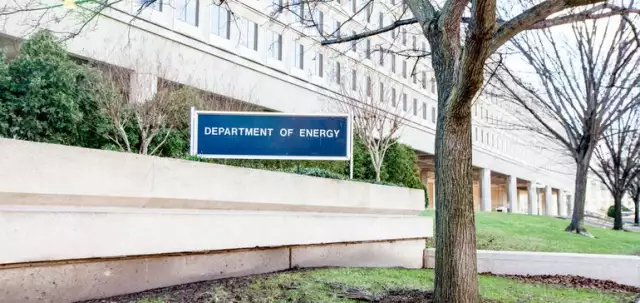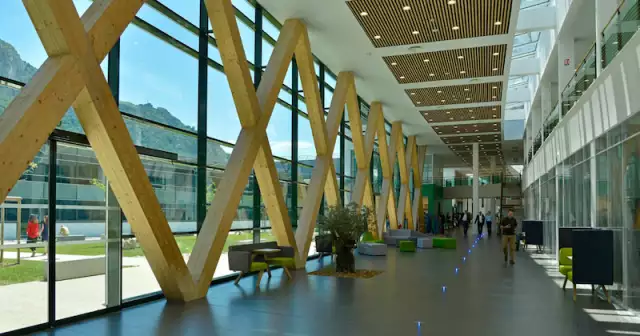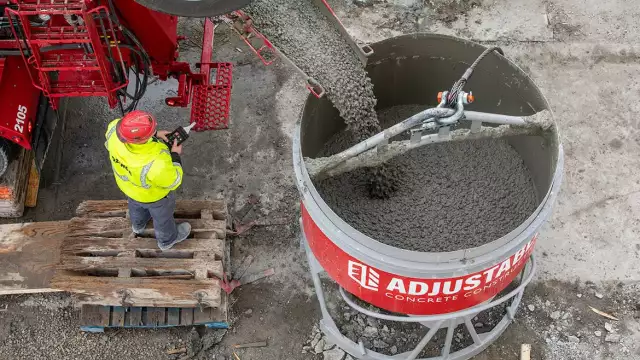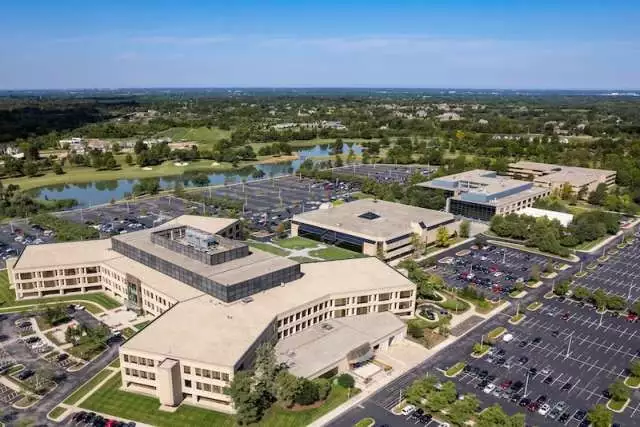DOE awards $39M for tech that would enable buildings to store carbon
DOE awards $39M for tech that would enable buildings to store carbon
Dive Brief:
Dive Insight:
The built environment generates nearly half of annual global CO2 emissions, according to 2030 Architecture, a commercial organization created to address contributors to greenhouse gas emissions. Building operations are responsible for 27% of those emissions annually, while building materials and construction, or embodied carbon, are responsible for an additional 20% annually.
Embodied carbon emissions are locked in primarily at the start of the building’s lifetime, said Sofos.
The program aims to make a dent in embodied carbon emissions, said U.S. Secretary of Energy Jennifer M. Granholm in the DOE press release. “There’s huge, untapped potential in reimagining building materials and construction techniques as carbon sinks," Granholm said.
The DOE awards will help meet the goal of net zero emissions by 2050, an executive order signed by President Joe Biden late last year to make the federal government carbon-neutral. The program aims for a 65% reduction in greenhouse gas emissions by 2030.
In an interview with Construction Dive, Sofos said to meet those goals, changes in construction processes need to take place sooner rather than later.
“We have a finite time until 2050 to hit emission reduction targets,” said Sofos. “Our goal is to demonstrate that it is possible to construct buildings that are net carbon negative over their lifetime.”
Here are six projects with a focus on alternative concrete and cement materials that won DOE funding, according to the announcement:
National Renewable Energy Laboratory – Golden, CO
The National Renewable Energy Laboratory and partners will develop a carbon-negative, thermally insulating concrete that uses bio-based supplementary cementitious materials and concrete additives generated from low-value byproducts created during sustainable aviation fuel production. The team will show that activated carbon, aerogels and ash produced from biomass processing, as well as additional CO2 calcination of these materials, can replace a large portion of ordinary portland cement in common ready-mix concrete.
University of Colorado Boulder – Boulder, CO
The University of Colorado Boulder will manufacture and commercialize a net-CO2-storing portland limestone cement using biogenic limestone produced from calcifying microalgae. The technology aims to produce biogenic limestone that sequesters and stores CO2 in mineral form through biological air capture via photosynthesis and calcification. Using this production method leads to a net carbon-neutral lifecycle.
University of Pennsylvania – Philadelphia, PA
The University of Pennsylvania will design a carbon-negative, medium-size structure by using a carbon-absorbing concrete mixture as building material. This technology complements mass-timber-based approaches via carbon-negative building design.
Oregon State University – Corvallis, OR
Oregon State University will develop C3, a cellulose cement composite, for use in residential and light commercial construction as an alternative to dimensional lumber and sheet products. The C3 material is net-carbon-negative and absorbs additional atmospheric CO2.
University of Wisconsin-Madison – Madison, WI
The University of Wisconsin-Madison will develop a carbon-negative replacement for portland cement, a component of concrete. The project will use direct air capture and convert industrial mineral wastes into a recyclable cementitious replacement for portland cement, with superior durability.
Biomason – Durham, NC
Biomason will retool bioconcrete production processes and material combinations to generate carbon-negative cementitious building materials. The strategy can potentially replace most products now served by carbon-intensive traditional cement.






